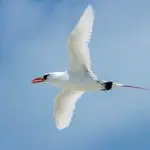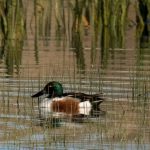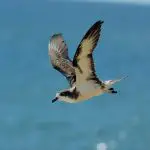Common Name: Emperor Goose
Scientific Name: Anser canagica| Size | Diet | Range in Hawaii | Status in Hawaii |
|---|---|---|---|
| 25 in. - 30 in. | worms, mollusks, crustaceans, and insects | Oahu, Kauai, or Big Island | Near Threatened |
The emperor goose (Anser canagica) is known for its distinctive appearance, with a long, slender bill and a white head and neck. It has a predominantly gray plumage, with a black breast and a white patch on its wings. It is a migratory species, with some populations wintering in the Pacific Northwest and California.
In Hawaii, the Emperor Goose is considered a rare visitor to the islands. It is not a common species in Hawaii, and sightings of Emperor Geese in the state are quite rare.
Emperor goose
Appearance
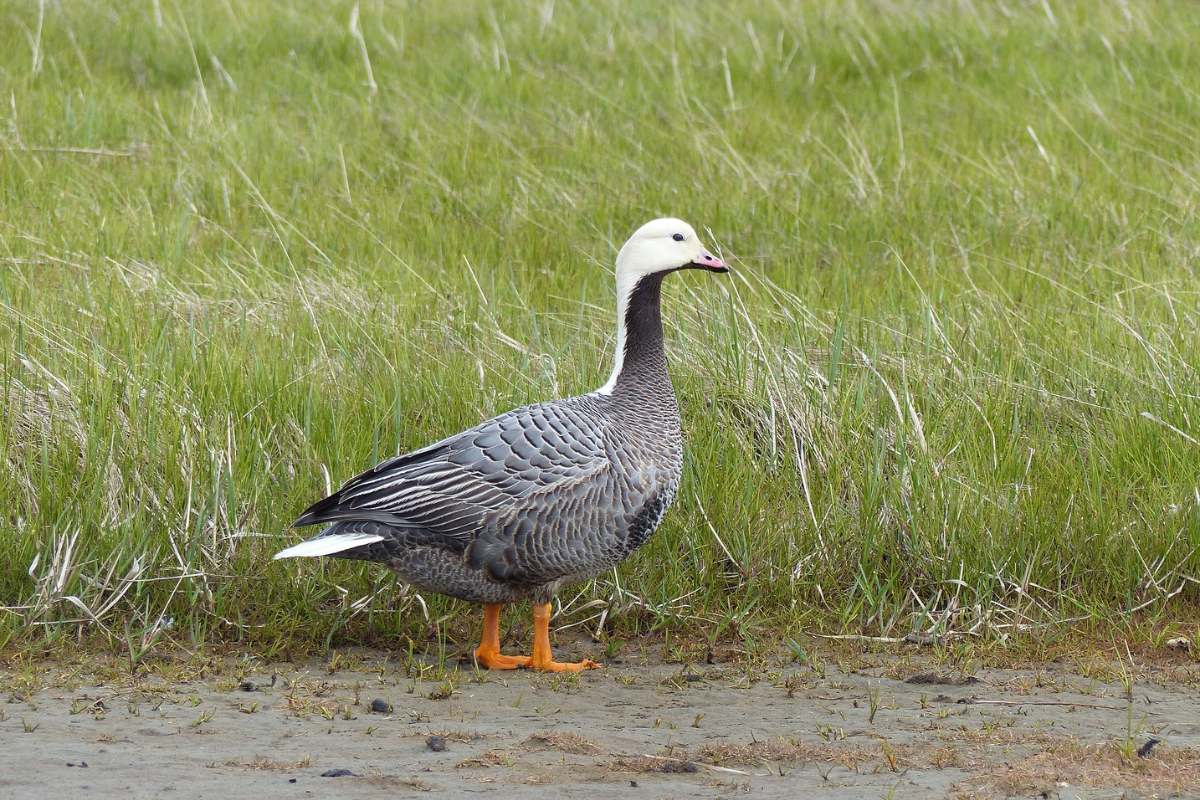
The emperor goose is a stocky, round-bodied bird, with a relatively short tail and long, broad wings. It has a predominantly gray plumage, with a white head and neck, a black breast, and a white patch on its wings.
The size of an emperor goose can vary depending on the specific subspecies and location, but most individuals are around 25-30 inches (63-76 cm) in length, with a wingspan of about 40-50 inches (101-127 cm).
The male emperor goose has a greenish-black head and a white neck ring, while the female is similar in appearance but is slightly smaller and has a brown head. The emperor goose has a short, sharp bill that is adapted for filtering small aquatic invertebrates from the water. Its feet are webbed, which helps it swim and dive underwater.
Diet
The emperor goose is a medium-sized waterfowl species that feeds on a variety of aquatic invertebrates, including worms, mollusks, crustaceans, and insects.
Behavior
The emperor goose is a social species that forms strong bonds with its mates and offspring. It is a gregarious species and is often found in large flocks, which can include other species of ducks and geese.
The emperor goose is a vocal species, and it makes a variety of calls, including a soft “honk” and a harsh, guttural “grk” sound. The male emperor goose is known for its elaborate courtship displays, which involve stretching its neck and head skyward and honking loudly.
Nesting
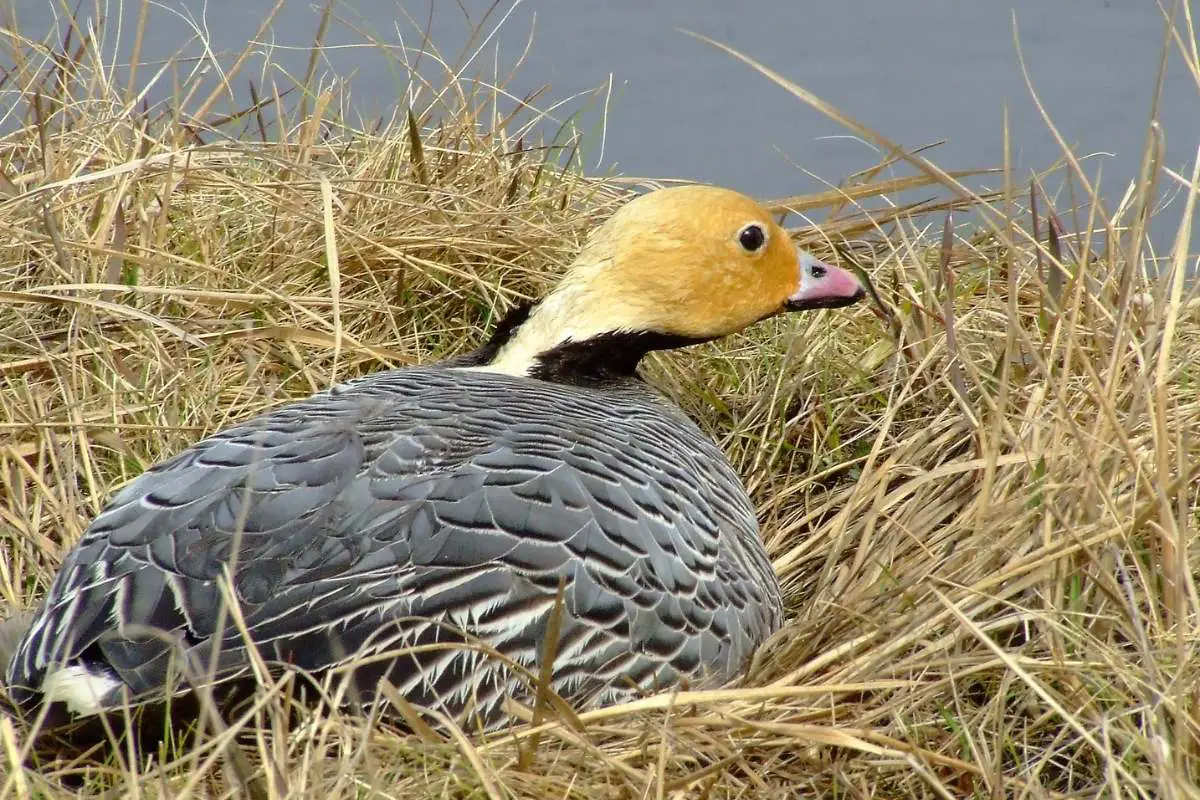
During the breeding season, the emperor goose nests in colonies on the ground, usually near water. The male and female work together to build the nest, which is a simple structure made of grass, moss, and other materials. The nest is usually located in a hidden spot, such as among tall grass or shrubs.
The female emperor goose lays a clutch of 4-6 eggs, which are incubated by both the male and female for about 25-30 days. The chicks are precocial, meaning that they are able to walk and feed themselves shortly after hatching. Both the male and female help care for the chicks, and the young birds fledge (leave the nest) at about 8-10 weeks of age.
Habitat
During the breeding season, the emperor goose is found in tundra and wetland habitats, including marshes, bogs, and lakes. It nests in colonies on the ground, usually near water. During the winter months, the emperor goose may be found in a variety of habitats, including agricultural fields, marshes, and estuaries.
Range
The Emperor Goose is native to western and southwestern Alaska, and it has been known to occur in small numbers in Hawaii. it is most likely to be found on one of the main islands, such as Oahu, Kauai, or Hawaii Island.
Conservation Status
The emperor goose is currently classified as “Near Threatened” by the International Union for Conservation of Nature (IUCN). This means that the species is not currently considered to be endangered or critically endangered, but it may be at risk of becoming so in the future if certain threats are not addressed.
Interesting Facts
1. A popular game bird
The Emperor Goose is a popular game bird, and it is often hunted for its meat and feathers. However, hunting pressure on the species has led to population declines in some areas.
2. Loud and honking call
The Emperor Goose is known for its loud, honking call, which can be heard over long distances.
3. Excellent swimmer
The Emperor Goose is an excellent swimmer, and it is often found near coastal wetlands and estuaries.
4. Feeds on a variety of plants and animals
The Emperor Goose feeds on a variety of plants and animals, including grasses, sedges, berries, and insects.
5. Migratory species
The Emperor Goose is a migratory species, and it typically spends the winter in areas along the Pacific Coast of North America, from central California north to British Columbia.
Frequently Asked Questions
Are Emperor Geese native to Hawaii?
No, Emperor Geese are not native to Hawaii. They are native to western and southwestern Alaska.
What do Emperor Geese look like?
The Emperor Goose is a medium-sized goose, with a length of about 28 inches and a wingspan of about 45 inches. It has a distinctive appearance, with a black head and neck, a white breast and belly, and brown and black barred wings.
How do Emperor Geese reproduce in Hawaii?
The breeding season for Emperor Geese occurs in the spring, and the females lay a clutch of 3-7 eggs. The eggs are incubated by the female for about 25-30 days, and the chicks are cared for by both parents.

